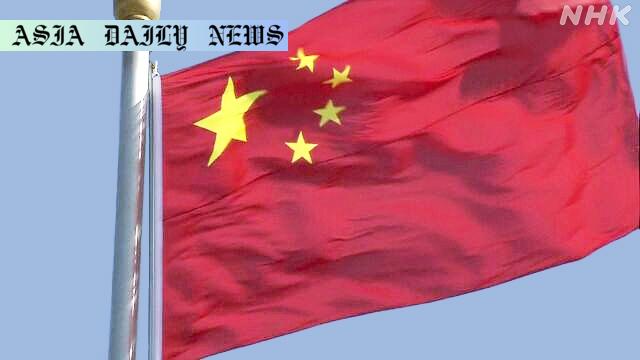China GDP: Economic growth slowed in April-June due to a real-estate slump and US tariffs, though still above the government’s target.
China’s GDP growth slowed to 5.2% in Q2 compared to Q1.
Factors include real-estate slump and US tariffs curbing investment.
Domestically, stagnant demand weighs down the economic rebound.
The central bank cut interest rates to address sluggish demand.
Trade tensions with the US pose risks of reigniting a trade war.

China’s Q2 GDP Growth Slows Amid Key Challenges
China’s economic growth has encountered a slowdown in the second quarter of the year, marking a notable deceleration amidst evolving domestic and international pressures. According to the National Bureau of Statistics (NBS), the gross domestic product (GDP) rose by 5.2% compared to the same period last year. While this figure slightly surpasses Beijing’s target of around 5%, it is still a decline from the 5.4% growth rate that was recorded in the first quarter. This dip in economic performance signals underlying tensions in China’s economic framework. Two key factors – a sluggish real-estate sector and ongoing trade uncertainties with the United States – have emerged as significant hurdles for the world’s second-largest economy.
Real-Estate Slump and Its Broader Ramifications
The real-estate sector has been a cornerstone of China’s economic growth for decades. However, its prolonged slump continues to cast a shadow over economic performance. Stagnant activity in the property market reflects deeper structural weaknesses, such as oversupply, declining home sales, and the debt struggles of major developers. This downturn not only impacts real estate but also has cascading effects on various related industries such as construction, home furnishing, and infrastructure. Consequently, domestic demand for goods and services has remained largely subdued in the face of these constraints.
US Tariffs and Trade Uncertainty
The role of US tariffs and trade tensions adds yet another layer of complexity to China’s economic challenges. Policies introduced under President Donald Trump led to increased tariffs on Chinese imports, discouraging business investments and creating widespread uncertainty. Both China and the United States have engaged in trade negotiations and agreed to limit their retaliatory tariffs drastically. Even so, concerns linger that the trade war could escalate again, especially given the geopolitical dimensions and sensitivities between the two nations. As a result, businesses remain cautious about making substantial investments, suppressing the potential for economic rejuvenation.
Government and Central Bank Responses
Aware of these mounting pressures, Chinese authorities have taken proactive steps to stabilize the economy. In May, the central bank cut interest rates in an effort to boost domestic demand, making borrowing more attractive for businesses and consumers alike. This monetary policy intervention aims to invigorate areas of the economy affected by reduced spending, such as retail and manufacturing. However, the efficacy of these measures remains a topic of debate. Structural reforms and policy adjustments would also be required to navigate through the entrenched issues within the real-estate sector and broader economy.
Future Outlook and the Need for Balanced Growth
Looking ahead, China’s leadership faces the daunting task of balancing short-term recovery measures with sustainable long-term growth strategies. Reassessing reliance on traditional growth engines such as real estate while promoting innovation, boosting consumer confidence, and fostering global trade collaboration are essential steps for steering the economy forward. Additionally, reducing international tensions and enhancing diplomatic dialogue with key economic partners like the United States are imperative to mitigate uncertainties and ensure global economic stability.
Commentary
The Growing Complexity in China’s Economic Landscape
China’s economic performance has long been a source of global interest and influence, and the recent slowdown in GDP growth highlights the increasing complexities the nation now faces. At the heart of this slowdown is an interplay of both domestic challenges and external pressures. The real-estate slump, in particular, exposes vulnerabilities within an economic model reliant heavily on property-led growth. These challenges underscore a broad need for diversification, ensuring China’s economy is not overly dependent on one sector for its success.
US-China Trade Relations – A Recurring Concern
Another major sticking point is the unpredictable trade relations between China and the United States. The recent easing of tariff policies shows a willingness from both sides to cooperate, yet it also underscores the fragility of these relations. Any signs of renewed tensions could dramatically dampen investor confidence and derail recovery efforts. Additionally, global markets are closely watching this bilateral relationship due to its implications for economic stability worldwide. Therefore, diplomatically managing these dynamics is not optional, but a necessity for both nations.
Proactive Policy Measures and Industry Sacrifices
The Chinese government and its central bank deserve recognition for taking proactive measures to cushion the economy during turbulent times. Interest rate cuts serve as a short-term solution to incentivize consumer and corporate spending. However, as a longer-term solution, structural reforms are essential for addressing deep-seated economic issues like real-estate dependency and stagnant domestic demand. That being said, reforms should remain balanced to avoid undue sacrifices from industries that are already struggling to recover from the ripple effects of the slowdown.


